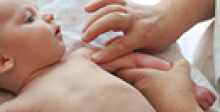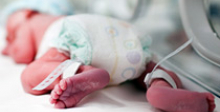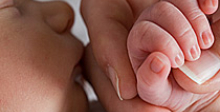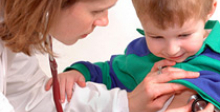Internal mini form
Contact Us Today
For decades, physicians have been overly cautious in diagnosing Cerebral Palsy and other motor delays. Now, there is a push to diagnosis early.
The process for diagnosing Cerebral Palsy usually begins with observations made by the child’s primary care physician, most often a pediatrician, and the child’s parents. There are some exceptions.
If a baby is born prematurely, or at a low birth weight, he or she is monitored closely in the neonatal intensive care unit of the hospital from time of birth. In extreme cases of child abuse, or shaken baby syndrome, a pediatric neurologist called to the hospital’s emergency or NICU unit will diagnosis the child’s condition. In the majority of cases, the child will attend regular well-baby visits where the pediatrician first uncovers signs of Cerebral Palsy during examination. In some cases, it is the parents who notice symptoms which they relay to the child’s doctor during these visits.
Developmental delay, abnormal growth charts, impaired muscle tone, and abnormal reflexes are early indications of Cerebral Palsy. Because there is no test that definitely confirms or rules out Cerebral Palsy, other conditions must be excluded from the list of possible causes, and Cerebral Palsy must be fully considered. Other disorders and conditions can appear as Cerebral Palsy, and Cerebral Palsy is often accompanied by associated conditions that complicate the process of diagnosis.
The medical examination process can involve multiple doctors, tests, and appointments.
The child’s pediatrician is likely to refer the child to one or more of the following medical specialists to obtain a formal Cerebral Palsy diagnosis. The care team for diagnosis may include:
- Pediatrician
- Developmental Behavioral Pediatrician
- Geneticist
- Neurologist
- Neuroradiologist
- Ophtalmologists
- Orthopedic Surgeon
- Otologists
- Neonatologists
- Pediatric Geneticists
Since there is no definitive test that can diagnose Cerebral Palsy, doctor’s may utilize one, or a combination, of the following to aid the diagnosis process:
- Assessing reproductive health factors
- Reviewing paternal health records
- Reviewing pregnancy, labor and delivery records
- Reviewing newborn screens conducted at birth
- Considering APGAR score
- Reviewing baby birth, medical, developmental and growth records
- Performing a physical examination of baby
- Performing additional screens (hearing, fatty acids, amino acids and hemoglobinopathies)
- Conducting neuroimaging tests to determine if brain damage exists
- Performing electroencephalography (EEG) or electromyography (EMG) to analyze nervous system function
- Conducting lab tests (blood work, urinalysis or genetic testing)
- Conducting evaluations (mobility, gait, speech, hearing, vision, feeding and digestion, cognitive and rehabilitation needs)
The doctors may rule out other similar conditions such as:
- Degenerative nervous disorders
- Genetic diseases
- Muscle diseases
- Metabolism disorders
- Nervous system tumors
- Coagulation disorders
- Other injuries or disorders which delay early development, some of which can be “outgrown”
Common tests that involve neurologists or neuroradiologists, include neuroimaging, such as cranial ultrasound, computed tomography scan (CT Scan), and magnetic resonance imaging scans (MRIs). These tests allow neurologists to actually “see” the brain. Various disorders, injuries, and conditions yield different results. These can be used to rule out Cerebral Palsy.
Infants who test positive for a developmental delay may be referred to medical specialists for further evaluations.
A child may be sent to an orthopedic surgeon to ascertain delay in motor development, record persistence of primitive reflexes, examined for dislocated hips, and assessed for abnormal posture.
Medical specialists are brought in to test hearing, vision, and perception, as well as cognitive, behavioral, and physical development.
A genetic specialist may be consulted for hereditary components.
The pediatrician will document all surveillance, screening, evaluation, and referral activities in the child’s health record.
The lengthy and detailed process can help rule out or confirm Cerebral Palsy. A formal diagnosis is usually made once the brain is fully developed between 2 to 5 years of age.












